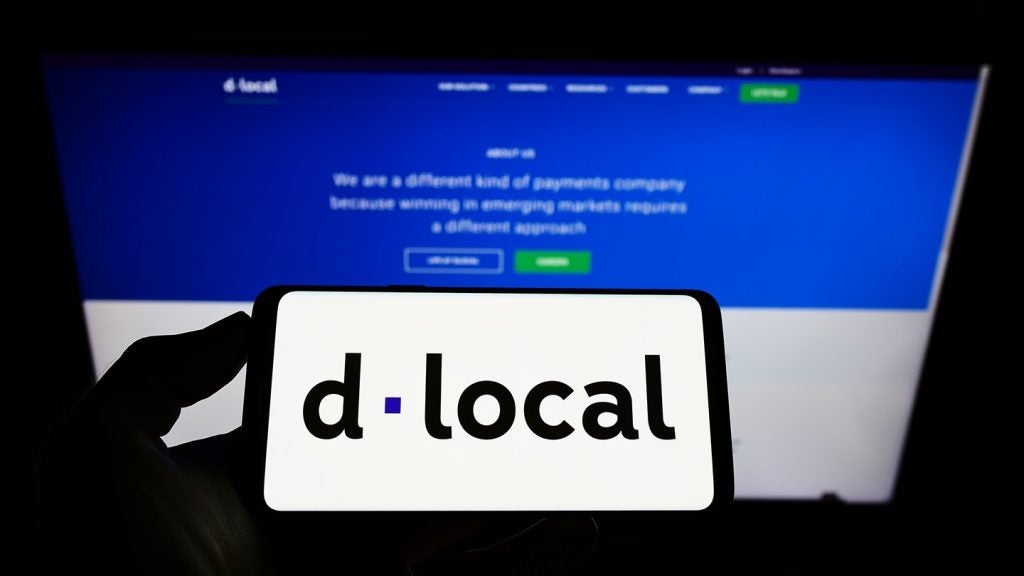Although France boasts one of the world’s highest levels
of non-cash payments, adoption of electronic payments has been
hindered by heavy use of cheques. Despite this, France is making
significant headway in moving to SEPA-compliant payment systems, as
Victoria Conroy reports.

For a country where the value of
daily transactions processed through large-value systems amounts to
a daily average of roughly €400bn – or over 20% of annual GDP –
France has made significant headway in implementing reforms and
overhauling its central clearing systems in preparation for the
introduction of SEPA.
One such infrastructure improvement
was the implementation of TARGET2, the pan-European euro payments
system, which will be backed up over the next few years by new
pan-European systems based on shared platforms within the framework
of the Eurosystem.
TARGET2 replaced the TARGET system
in May 2008. Whereas the original TARGET system was decentralised,
TARGET2 is structured around a single shared platform (SSP), which
provides harmonised payments services for participating
institutions. Banque de France, along with Banca d’Italia and
Germany’s Bundesbank, has been charged with building and managing
TARGET2.
How well do you really know your competitors?
Access the most comprehensive Company Profiles on the market, powered by GlobalData. Save hours of research. Gain competitive edge.

Thank you!
Your download email will arrive shortly
Not ready to buy yet? Download a free sample
We are confident about the unique quality of our Company Profiles. However, we want you to make the most beneficial decision for your business, so we offer a free sample that you can download by submitting the below form
By GlobalDataThe countries involved migrated
from TARGET to TARGET2 in three successive waves, in November 2007,
February 2008 and May 2008. In France, TARGET2 replaced the
large-value payment systems TBF and PNS. Another major change
occurred when the CORE retail payment system replaced the SIT
system in October 2008. SIT, which was established in 1992, had
handled the interbank exchange of all retail payment instruments in
France since 2002, including credit transfers, truncated cheques,
card payments and electronic trade bills.
CORE went live in January 2008 to
start processing SEPA credit transfers. Domestic payment
instruments migrated in stages from SIT to CORE between June and
October 2008. Since then, CORE has handled the interbank exchange
of all domestic retail payment instruments as well as SEPA credit
transfers in France. The system has approximately 470 participants,
including 12 direct participants. The SIT and CORE systems handled
12.5bn transactions, worth a total of €5.26trn ($6.83trn) in
2008.
Similarly, the financial
instruments settlement system ESES France replaced the RGV2
securities settlement system in November 2007. This system ensures
gross and real-time settlement of securities and cashflows,
providing an immediate finality of settlement. Its originality is
that it enables the settlement of cross-border transactions between
France, Belgium and the Netherlands under the same conditions and
with the same efficiency as with domestic transactions.
The other main clearing system in
France is CLS, which provides settlement for foreign exchange
trades in 17 currencies. CLS’ share of the foreign exchange
settlement market has increased greatly since the system was set up
in September 2002, and it recently began diversifying its
settlement activities to include other financial products. Owing to
CLS’ share of the currency trading sector and the high volatility
on the foreign exchange market, CLS recorded substantial levels of
business in 2007 and 2008.
On 17 September 2008, CLS reached a
new record for the volume of payments settled in one day: more than
1.55bn payment instructions, representing a gross value of $8.6trn.
It was the first time that the volume of payment instructions in
one day exceeded 1.5m (the former record was 1.15m reached on 7
July 2008).
A full 73.5% of all transactions by
volume including card withdrawals are processed by interbank
systems, though the proportion by value is only 59.8%. Transactions
exchanged outside interbank systems are divided between intrabank
transactions (18.1% in volume terms, 21.2% in value terms),
intragroup transactions (7% in volume terms, 6.3% in value terms),
and interbank bilateral exchanges, which account for 1.5% by volume
and 27.5% by value.
The proportions for processing by
interbank systems and outside interbank systems vary significantly
from one means of payment to another, reflecting the processing
strategies used by institutions. Remote settlement, bills of
exchange, interbank payment orders and cheque payments reveal a
high proportion of interbank exchanges (over four out of five).
Meanwhile, more than half of all card withdrawals (54% in volume
terms) are processed outside interbank systems.
 Non-cash payments
Non-cash payments
Credit transfers are by far the most popular payment method in
France, with the number of transactions rising from 2.4trn in 2005
to 2.6trn in 2008. Total credit transfer value has risen at an even
faster pace, from €13.4trn in 2005 to €19.4trn in 2008.
Credit transfers are used for
payments made by companies, government agencies and local
authorities, but seldom by individuals. The interbank exchange of
all credit transfers takes place in paperless form. Ordinary
transfers are settled on the day of presentation, while credit
transfers for payment on a due date (which remain rare) are
presented two or three days in advance of interbank settlement.
In terms of value, credit transfers
comprised 83% of the total value of payments in France in that
year, compared to 78% in 2005. Of the remaining payment methods, in
2008, direct debits comprised 5%, payment cards comprised 1%,
cheques comprised 9%, while other payment methods comprised 2%.
Compare these figures to 2005, when
cheques comprised 13% of the total value of payments, and it is
clear to see that cheques are rapidly giving way to other payment
methods.
France has witnessed a steady
decline in the number of cheques over the past decade. From 3.91m
cheque payments in 2005, by 2008 that number had fallen to
3.48m.
In terms of value, cheques values
have remained steady – from €2.17trn in 2005 to €2.06trn in
2008.
Cheques are still popular because
customers consider them easy to use, either for remote payments or
face-to-face transactions, and they are free of charge for the
drawer.
These figures suggest that cheques
are losing ground more in terms of volume than in terms of value,
reflecting the fact that they are preferred to cards when it comes
to making larger payments: the average cheque payment is
approximately €500, compared with €50 for card payments.
Since 2006, the Banque de France
has assessed cheque security every year through a review of
compliance with the objectives of the July 2005 Cheque Security
Reference Framework and the industry-wide agreement of July 2003 on
the exchange of truncated cheques. Institutions that manage cheques
must file an annual statement that is certified by their internal
control officer. Most banking groups have incorporated cheque
security objectives directly into their internal control reference
frameworks.
Direct debit transaction numbers
are also rising strongly, from 2.5trn in 2005 to 3trn in 2008. In
terms of value, direct debits accounted for €906.7bn in 2005,
rising to €1.05trn in 2008.
They are generally used for
recurrent payments such as electricity, gas, telephone and water
bill payments, and for monthly tax payments. Direct debits offer
advantages to banks (processing costs are relatively low thanks to
automation), as well as to the utility companies (by simplifying
their accounting administration) and to individuals (by simplifying
the payment).

The payment card
market
However, card payments are now the most popular non-cash means
of payment in France by volume, accounting for 41.2% of
transactions in 2008. But card payments, which are mainly used for
routine household purchases, account for just 1.42% of the total
value of non-cash payments.
In 2008, there were 102.8m cards in
circulation. Of this figure, four-party cards, for example
internationally branded cards like MasterCard and Visa, numbered
57.5m, while three-party cards numbered 45.3m.
Data from the European Central Bank
(ECB) and Banque de France illustrates the growth of card usage in
France over the last few years, with the market growing from 78.8m
cards in circulation in 2005 to 85.4m in 2008.
Of these cards, the growth rate in
the separate payment functions has been wildly different. In terms
of credit cards, there were 34m in circulation at the end of 2008
compared to 32.7m the previous year and 31.2m in 2005.
If this is then compared to the
number of debit cards in the country – which has almost doubled in
the last 5 years, from 38.9m in 2005 to 64.3m in 2007 and 65.9m in
2008 – it is obvious where the major market growth has been.
The role of Groupement des Cartes
Bancaires (CB) is central to the French cards industry. Set up in
France in 1984 to establish an interbank card payment and cash
withdrawal system, CB is a group with almost 146 members from
French and foreign banking and financial institutions, mostly
operating in France.
CB does not have the status of a
credit institution and does not issue payment instruments nor
manage customer accounts. All operational aspects related to CB
cards are the reserve of the member banks and credit
institutions.
In 2008, the number of CB cards
increased by 3.14% (57.5m cards) compared to 2007, while the number
of transactions grew by 6.9% (7.75bn transactions) and total
revenues saw a rise of 8.1% (€412.9bn or $619.2bn).
There were 1.5bn interbanking cash
withdrawal transactions from ATMs, for a total of €109bn, while
payments by CB cards reached 6.2bn transactions for a sum of
€303bn. The number of CB ATMs amounted to 53,325, with 1.16m
retailer contracts at the end 2008.
In 2008, the volume of fraud in CB
payment transactions increased by some 21% compared to 2007, to a
rate of 0.036% for a total of €106m.
This increase can be explained by
the rise in remote payment fraud, which represents 65% of the
payment fraud in the CB system and for which the rate rose to
around 0.25% in 2008, with a peak of 0.38% in August.
The volume of fraud in CB card
payments abroad rose by 4.7% in 2008, amounting to €91m. The fraud
rate is around 0.71% (compared to 0.53% in 2007). The use of
counterfeit magnetic stripes on cards in face-to-face payments has
also increased by 26% for CB cards used abroad. Since a quarter of
this counterfeiting takes place in North America, it is borne by
the CB issuers.
The volume of fraud in payments
with non-CB cards with CB acquirers remains stable, at around €62m,
and represents a fraud rate of 0.36%. With cash withdrawals, the
volume of fraud in the CB system is identical to that of 2007
(€18m).
Carte Bleue had been the exclusive
licensee for Visa cards in the country up until October 2008, when
the two merged to form Carte Bleue Visa. Since 1992, all Carte
Bleue and CB cards have been chip-enabled. There are a few
transactions such as low value auto-route tolls that are paid
without PINs.
Foreign cards without chips can
still be used at French merchants, with the usual procedure of
swiping the magnetic stripe and signing the receipt.
Up until 2007, co-branding in
France was banned, with the ban itself being lifted in October that
year and cards being issued almost instantly. This decision was
made in an attempt to facilitate SEPA compliance in the
country.
Despite co-branding being
previously unavailable, co-badging has been allowed under the CB
system (for example, the logo of the partner payment system,
usually Visa or MasterCard, can appear on the card along with that
of the issuer).
The number of ATMs in France has
risen from 47,800 in 2005 to 53,300 by 2008, while POS terminal
numbers have grown from 1.09m in 2005 to 1.37m in 2008. ATM cash
withdrawals have risen from 1.43m in 2005 to 1.59m in 2008, while
POS payment transactions have risen from 5.11m in 2005 to 6.35m in
2008.
Over recent years, card payments
have grown to occupy an important place in household spending in
France. This prompted Banque de France to assess the security of
the main issuers and to make recommendations on how to improve
security.
As part of this, it asked banks in
the CB Bank Card consortium to fit their cards with dynamic data
authentication (DDA) technology, so as to fight counterfeiting more
effectively.
DDA was gradually added to around
55m CB bank cards between 2006 and 2008, helping to significantly
reduce counterfeit fraud in face-to-face payments.
Furthermore, Banque de France
called for steps to improve the security of online card payments
after noting that fraud involving this method of payment accounted
for 51% of all domestic fraud in 2008, according to figures
published by the Observatory of Payment Card Security.
A gradual transfer of
responsibility was set in motion in October 2008 aimed at
encouraging merchants to acquire mechanisms to enhance the security
of online card transactions (for example, authentication that works
for just one transaction) which reduces the risks of fraud through
stolen card numbers.

Online
payments
Banque de France has increasingly scrutinised the security of
online banking payment services. Several years ago, the bank drew
up a number of requirements aimed at strengthening the
authentication of users of online banking services.
These recommendations initially
sought to promote broad-based introduction of two-way
authentication solutions on online banking sites, such as solutions
enabling each party in a transaction to identify the other
party.
Subsequent recommendations focused
on the progressive deployment in 2009 and 2010 of one-time
authentication solutions based on a password or code that can be
used only once to prevent the risk of fraudulent re-use.
Since 2007, Banque de France has
stepped up its assessment work to determine the extent to which the
banking industry has implemented its recommendations. A number of
French banks are already sending out one-time access codes by SMS
and others are starting to provide their customers with card
readers enabling one-time authentication, while others are still
conducting trials in various customer segments.
The move to
SEPA
In January 2008, more than 4,000 European banks started
exchanging SEPA credit transfers, which coincided with the
implementation of the SEPA Cards Framework (SCF) interoperability
principles. However, users have been slow to switch from the old
domestic credit transfer instruments to SEPA credit transfers.
In November 2009, SEPA credit
transfers accounted for 5.3% of all transfers in Europe but in
France, they represented less than 1% of all payments in 2009. This
figure is expected to reach and exceed the European average in
2010, after the gradual migration of governments departments.
The use of ordinary credit
transfers should cease by the end of 2011, in accordance with the
goals set in the French migration plan.
In addition, the transposition of
the Payment Services Directive, which came into force in November
2009, now provides a harmonised legal framework that facilitates
the use of SEPA payment instruments.
The National SEPA Committee has decided to launch SEPA direct
debits in France in November 2010.







